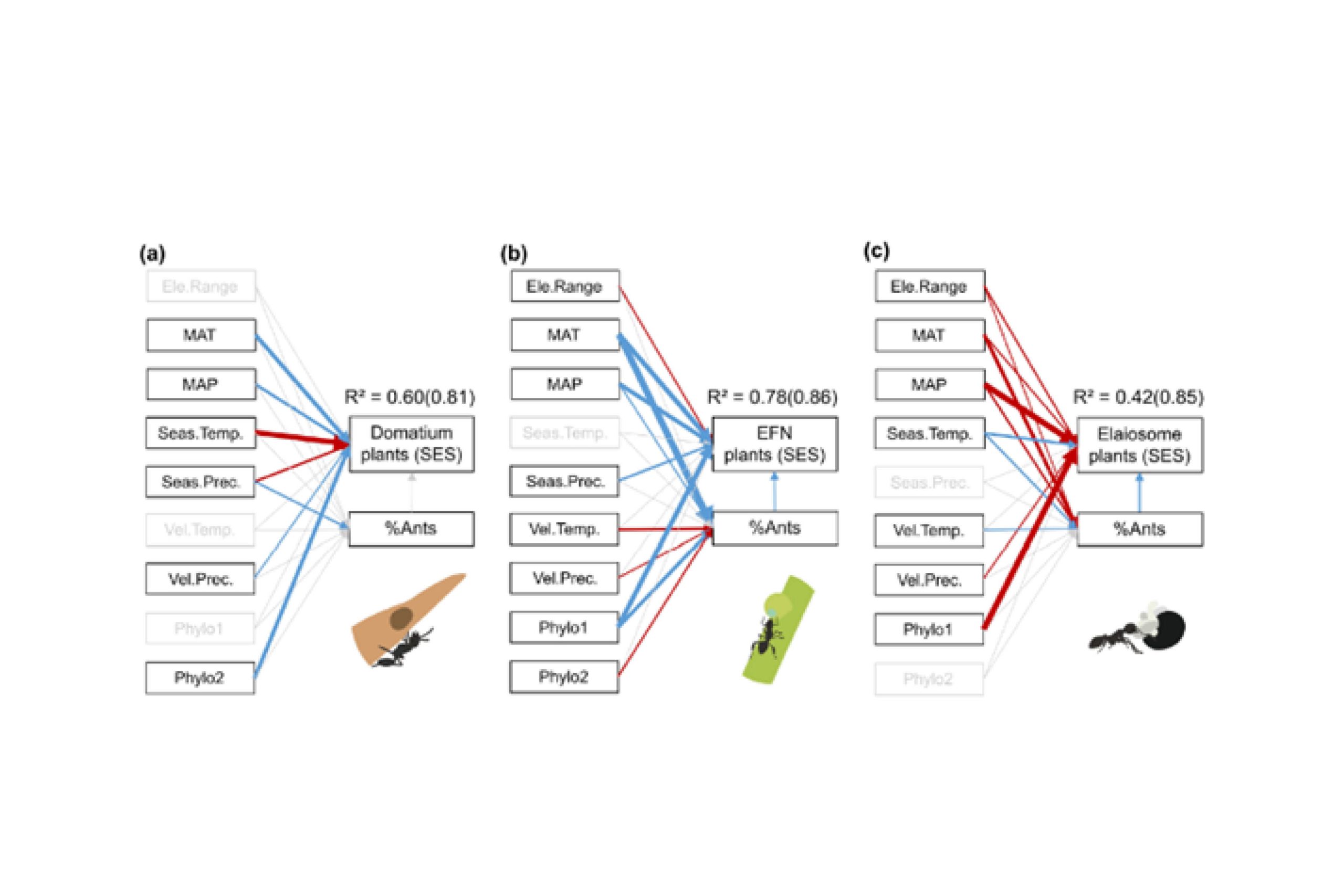Jest to kolejny projekt dotyczący biogeografii globalnej zrealizowany we współpracy z międzynarodowym zespołem ekologów. Interakcje biotyczne odgrywają ważną rolę w kształtowaniu rozmieszczenia geograficznego gatunków i wzorców różnorodności. Jednak rola interakcji mutualistycznych w kształtowaniu globalnych wzorców różnorodności roślin była słabo poznana, szczególnie w odniesieniu do interakcji z bezkręgowcami. W pracy dokonaliśmy analizy biogeograficznej trzech różnych mutualizmów mrówek i roślin, rozróżniając rośliny posiadające domatia, nektarniki pozakwiatowe (EFN) i elajosomy, w oparciu o kompleksowe rozmieszczenie geograficzne ~ 19000 roślin kwitnących i ~ 13000 gatunków mrówek. Średnia roczna temperatura i opady są najsilniejszymi predyktorami różnorodności roślin związanych z mrówkami.

Abstract
Biotic interactions play an important role in shaping species geographic distributions and diversity patterns. However, the role of mutualistic interactions in shaping global plant diversity patterns remains poorly understood, particularly with respect to interactions with invertebrates. It is unclear how the nature of different mutualisms interacts with abiotic drivers and affects the distribution of mutualistic organisms. Here, we present a global-scale biogeographic analysis of three distinct ant-plant mutualisms, differentiating between plants bearing domatia, extrafloral nectaries (EFNs), and elaiosomes, based on comprehensive geographic distributions of ~ 19000 flowering plants and ~ 13000 ant species. Domatia and extrafloral nectaries involve indirect plant defences provided by ants, while elaiosomes attract ants to disperse seeds. Our results reveal distinct biogeographic patterns of different ant-plant mutualisms, with domatium- and EFN-bearing plant diversity decreasing sharply from the equator towards the poles, while elaiosome-bearing plants prevail at mid-latitudes. Present climate, especially mean annual temperature and precipitation, emerge as the strongest predictors of ant-associated plant diversity. In hot and moist regions, typically the tropics, the representation of EFN-bearing plants increases with the proportion of potential ant partners while domatium-bearing plants show no correlation with ants. In dry regions, plants with elaiosomes are strongly linked to interacting ant seed dispersers. Our results suggest that ants in combination with climate drive the spatial variation of plants bearing domatia, extrafloral nectaries, and elaiosomes, highlighting the importance of mutualistic interactions for understanding plant biogeography.
Luo Y., Taylor A., Weigelt P., Guénard B., Economo E.P., Nowak A., Inderjit I., Kreft H. 2023. Climate and ant diversity explain the global distribution of ant-plant mutualisms. Ecography 2023: e06841 doi: 10.1111/ecog.06841
